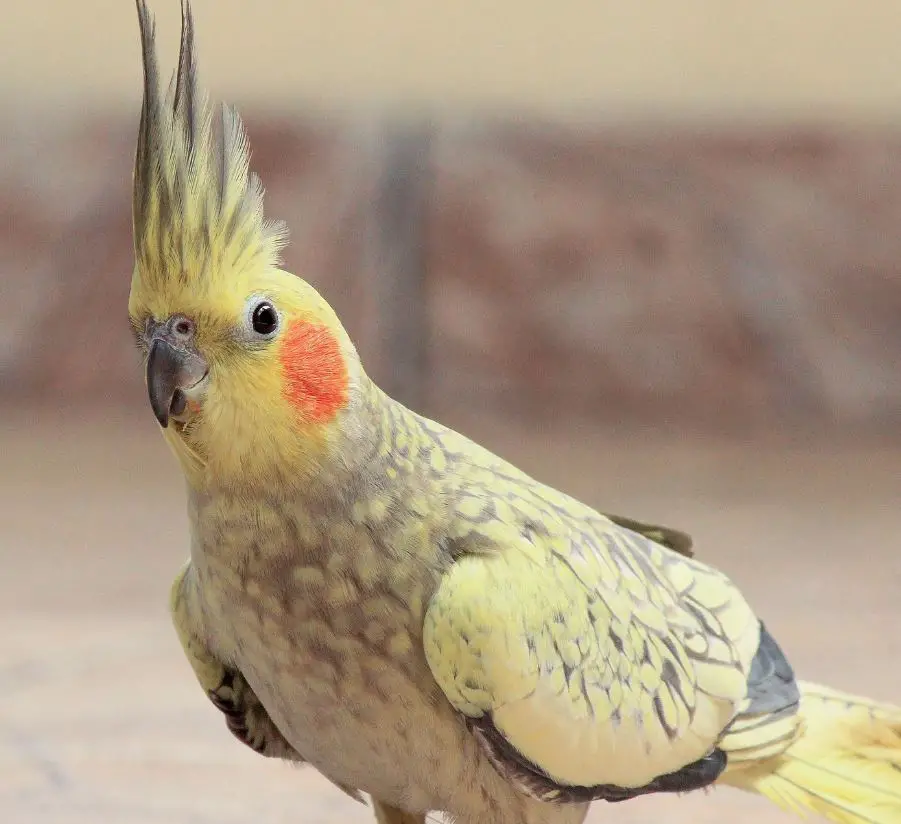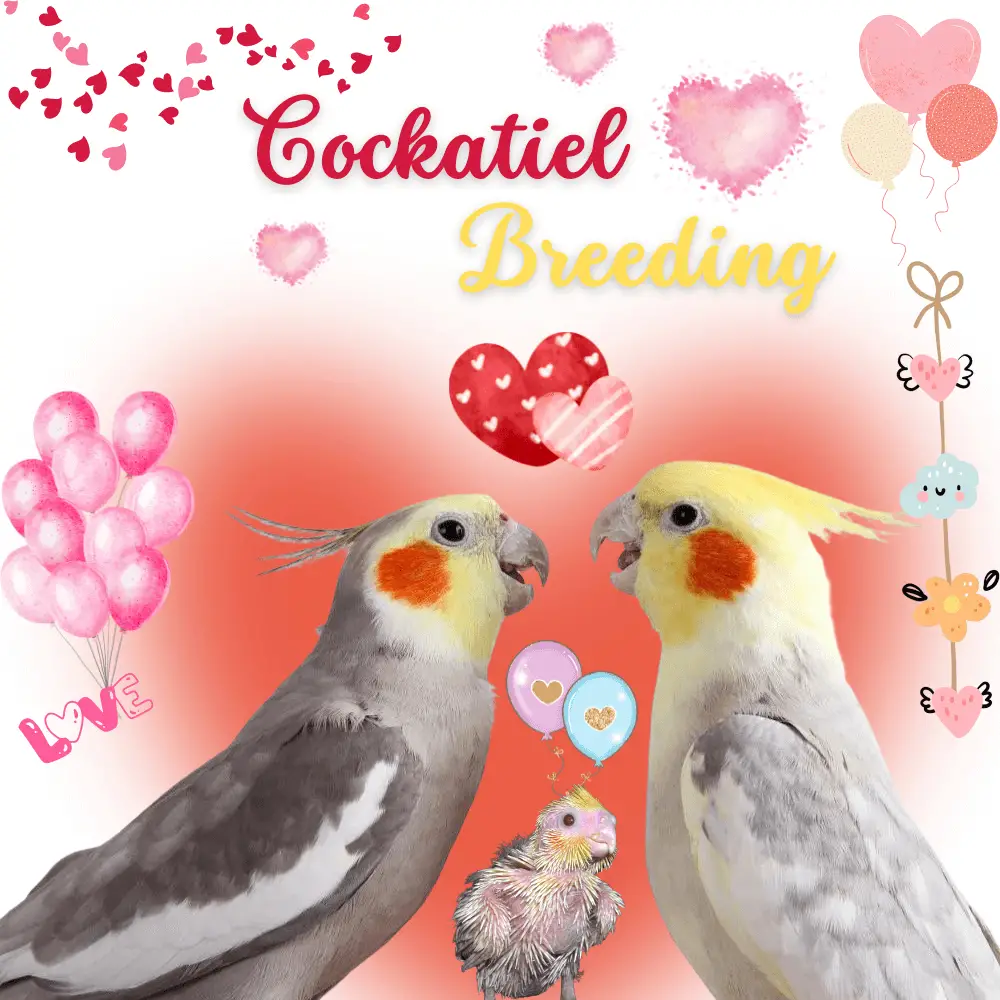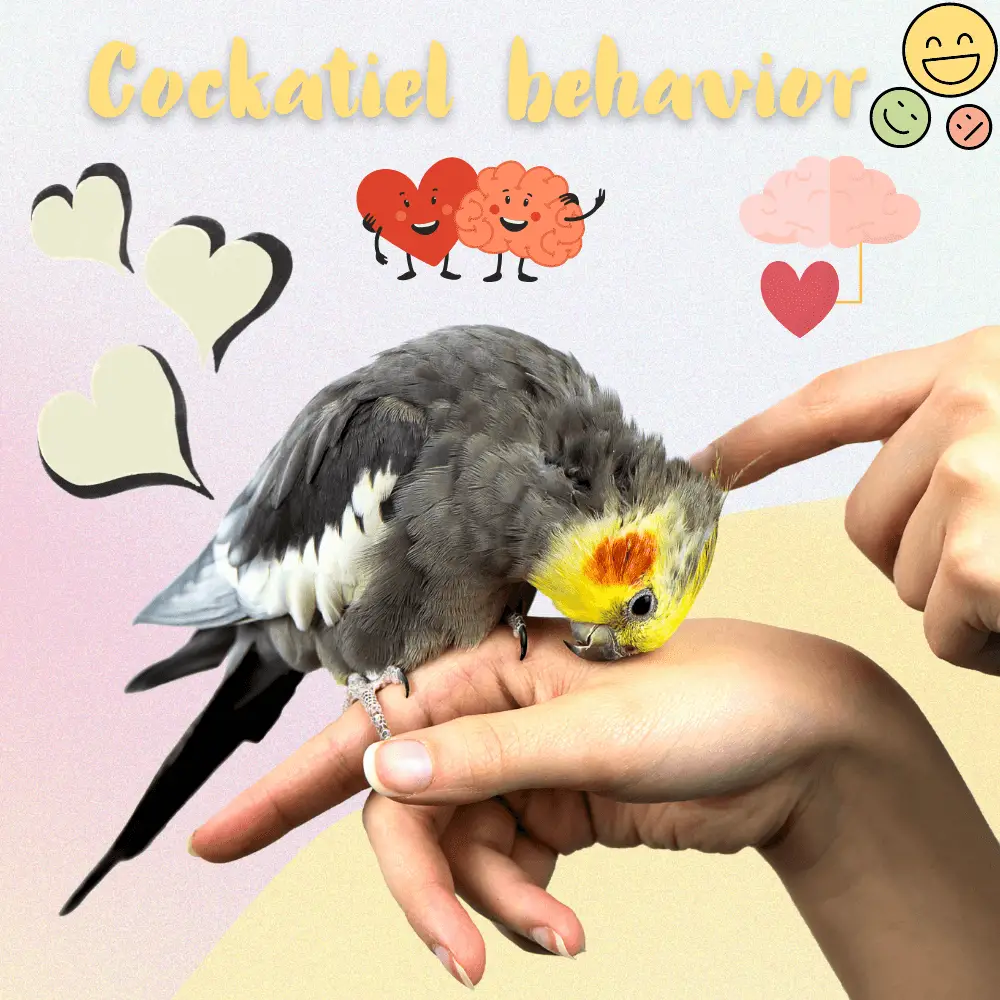Cockatiel behavior: Although they are small, the behavior of cockatiels is complex, and you must understand this in order to establish a good relationship with them.
The cockatiel is an inexhaustible source of companionship and entertainment. However, this species is sensitive and psychologically complex. To live with it, you have to know how to interpret its behavior correctly. Otherwise, various troubles may appear.
Each cockatiel has its own personality and quirks when it comes to expressing itself. Here we expose the basic characteristics of any specimen of this species, the behaviors that all exhibit in their life in freedom. So continue reading.
The 3 main pillars of the behavior of these birds are sociability, intelligence, and communication. They spend most of the day foraging for food, but being part of such a large group, they must coordinate effectively. For this reason, they resort to a hierarchy when resources are scarce.
Cockatiel personality

The cockatiel ( Nymphicus hollandicus ), also known as the nymphic parakeet, is a species of parrot in the cockatoo family. Note that this is the only living species of its genus ( Nymphicus ).
Cockatoos are widely distributed in mainland Australia, mostly in inland areas. They prefer open areas with available water or wooded areas that are not too dense. Cockatiels migrate from the north to the south of the Australian continent, seeking stable weather conditions throughout the year.
the cockatiel has a life expectancy of 15 years. Their approximate size is 25-30 centimeters counting the tail and they weigh about 90 grams. Based on these numbers, it can be said that it is the smallest species of cockatoo that exists.
Cockatiels’ favorite food is seeds, which they pick up from the ground and easily peel with their curved beaks. They consume them on the branches with other vegetable matter, because on the ground, they are vulnerable to possible attacks. The treetops, in addition to food, provide protection from aerial predators.
Cockatiels are highly gregarious parrots, forming flocks of over 100 or even 1000 individuals. Being prey, they are wary and sensitive, with a strong tendency to flee rather than confront.
They are also very noisy parrots. Screams and howls are part of their daily interaction, so there is no point in scolding them loudly. They’ll probably find it funny and scream even more.
Finally, it should be noted that cockatiels are curious by nature and very intelligent. They like to inspect everything within their reach and are always on the lookout for new stimulation. Thus, in captivity, they can develop mental health problems if they lack environmental enrichment.
Cockatiel as pet

The language of these cockatoos has 2 main components: verbal language and non-verbal language. The first is composed of different vocalizations:
- Survey calls: They call and answer each other to make sure everyone is okay.
- Cries: they generally express anger and are accompanied by threatening gestures.
- High-pitched screams: These screams can be a sign of stress, fear, or pain. They serve as a warning to the rest of the group of possible dangers.
- Mating songs: vocalizations specific to the pre-copulation ritual.
- Chatter: these are soft vocalizations that these birds emit when they are comfortable with a partner. They are long-lasting and usually indicate calm.
- Hiss: Similar to a cat’s hiss, the hiss is usually preceded by a peck. It is a warning sign.
SOURCE: African Grey Parrot Pet
The intensity and tone of these sounds vary depending on the emotional charge that the cockatiel wants to convey to the message. To correctly interpret its messages, it is also necessary to observe the movements and postures of the bird. Here are some very useful guidelines:
- Crest: This is a clear indicator of this parakeet’s high level of emotional arousal. The higher it is, the more the bird is excited, but it is important to distinguish the reason for this – it can be fear, joy, interest, or irritability.
- Feathers: Depending on the rest of the signals, ruffled feathers can be a sign of relaxation, illness, or an impending attack. If she sticks them to her body, she usually feels fear.
- Wings: deploying them in the shape of a heart is part of the courtship display of males. Opening them completely can be a sign of aggression or territoriality.
- Body posture: she can tuck her head under her wing – usually to sleep -, groom herself, or even jump for joy. When hanging from a branch with the head down, it expresses territoriality.
- Head: if it approaches its partner with its head down, it usually indicates that the specimen needs attention and grooming. If, on the other hand, she is standing, it can signify a threat – she wishes to appear taller – or indicate surprise and fear.
- Pupils: Dilated pupils indicate irritation and possible stroke.
Cockatiel breeding

Cockatoos are monogamous and create stable relationships even outside of the breeding season. This allows them to save the enormous energy expenditure involved in looking for a breeding partner each year. Before mating begins, both sexes exhibit specific ritual behaviors:
- Females emit low peeps while raising their tail feathers. They thus show that they are ready for copulation.
- The males show a greater variety of behaviors: their vocalizations are much more intense, with more complex singing whistles.
- They accompany these sounds with a dance in which they walk with their wings straight and away from their body, quickly striking a surface with their beaks. They also inspect the cavity in which they will establish the nest.
The care of the young and the incubation process are carried out by both sexes equally. Once the young hatch, they take turns bringing food and never leave the nest unattended. Moreover, succeeding or not in taking care of the little ones until they are adults will directly affect the stability of the couple’s relationship.
Signs of a sick cockatiel
Any behavior that is not usual and that appears suddenly is considered abnormal. It is usually a symptom of a physical or mental illness, often closely linked to stress and anxiety, especially in captivity. The most common signs of psychological stress are:
- Stereotypies: repetitive movements with no apparent function.
- P icing: the bird tears its own feathers or those of another bird. He cannot reach the feathers of the head.
- Constant screams: These are not the usual calls for attention, but loud vocalizations that do not stop. It can also be a sign of physical pain or the presence of an illness.
- Aggression or sudden fear is more intense than usual.
Keeping these birds in captivity is possible with proper care, as they are not in danger of extinction. However, the incidence of psychological problems associated with deprivation of liberty is high. For this reason, before you consider adopting a cockatiel, you need to seriously make sure that you can provide him with a happy life.

